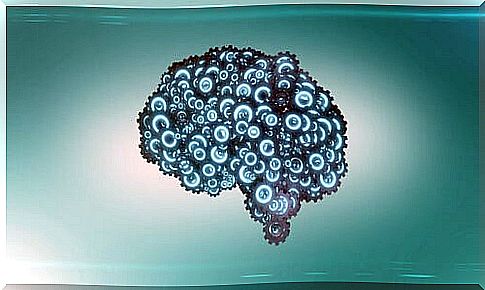The Fascinating Experiment Of The Stimoceiver

The stimoceiver is one of the most controversial neuroscientific experiments in history, but also one of the most fascinating. A device was implanted in the brain to control behavior. It was invented by the Spanish scientist José Manuel Rodríguez Delgado.
Simply put, this device made it possible to direct the behavior of biological organisms from a distance. It is like a remote control that when activated causes electrical stimuli in certain areas of the brain and makes an animal or human act in a specific way.
The inventor of the Stimoceiver, José Manuel Rodríguez Delgado , received strong criticism. Although his objective was to advance the understanding of the brain and open a way to rehabilitate certain brain functions, it was speculated that what he really sought was to produce an apparatus to manipulate the mind and direct or condition behavior in this way.

The famous experiment with the Stimoceiver
After inventing the stimoceiver , Dr. Rodríguez Delgado carried out an experiment that made him famous worldwide. It took place in May 1965, in Córdoba (Spain). Rodríguez chose a very peculiar setting to carry out the test of his device: a bullring.
It was a small bullring and there were only a dozen witnesses. For the experiment with the stimoceiver a bull named Lucero was chosen. They say that several right-handers began to cap him, while the scientist waited behind a mockery.
At one point, the doctor came out, very well dressed in a shirt and tie. In his hands he only held a remote control. Little by little, he was approaching Lucero and this, when he saw him, undertook an onslaught with fury.
When he was close enough, the scientist activated his remote control. Then there was an electric shock in Lucero’s brain and he gave up the attack. The following May 23, Dr. José Manuel Rodríguez Delgado made the front page of the New York Times and everyone knew that a way had been found to manage the brain.
The creator of the Stimoceiver
Dr. José Manuel Rodríguez had been a Yale University fellow since 1946. In 1950, he joined the physiology department of that University at the invitation of the famous scientist John Fulton. Just a decade later, he was already testing his stimoceiver.
The first experiments were done with cats and later with monkeys. It is said that Rodríguez turned them into a kind of toys that did everything he wanted. Then it was time to do the great public test in the bullring of Córdoba. With it, the whole world witnessed the incredible advance.
Delgado pointed out that it was possible to produce targeted radiation stimulation in the brain, particularly in the areas of the amygdala and hippocampus. To do this, a small radio transmitter was implanted in the brain, which was then operable by remote control. That simple and that complex.
Animal and human testing
The first time that Dr. Rodríguez Delgado spoke about the possibility of remote control behavior was in the late 1940s. Later, he had the opportunity to go to experience Bermuda, more precisely in a place called Hall’s Island.
There he managed to insert small “stimoreceptors” or stimoceivers into the brains of an entire group of gibbon monkeys. A short time later he managed to control the behavior of these animals, to the point that several of them rebelled against the “alpha males”, something that is unthinkable in a natural way.
Starting in 1952, he began experimenting with humans. His “guinea pigs” were basically mental patients from the Rhode Island Hospital in Massachusetts. According to him, he only employed patients for whom science could no longer do anything.

The controversial experience
Most of the results of the experiments carried out with the stimoceiver were recorded in the book Physical control of the mind, published by Dr. Rodríguez Delgado in 1969. There he records 25 implants in human beings, most of them in people suffering from schizophrenia or epilepsy.
It pointed out that radio transmitters could remain in the brain for life. Also that he had managed to generate multiple states and emotions, such as joy, deep concentration or extreme relaxation.
He was accused of being part of a CIA program to control the human mind. It has never been fully clarified whether this was the case. The truth is that stimoceiver served as a precursor to other devices that are currently being tested to improve illnesses such as Parkinson’s disease or obsessive-compulsive disorder (OCD).









